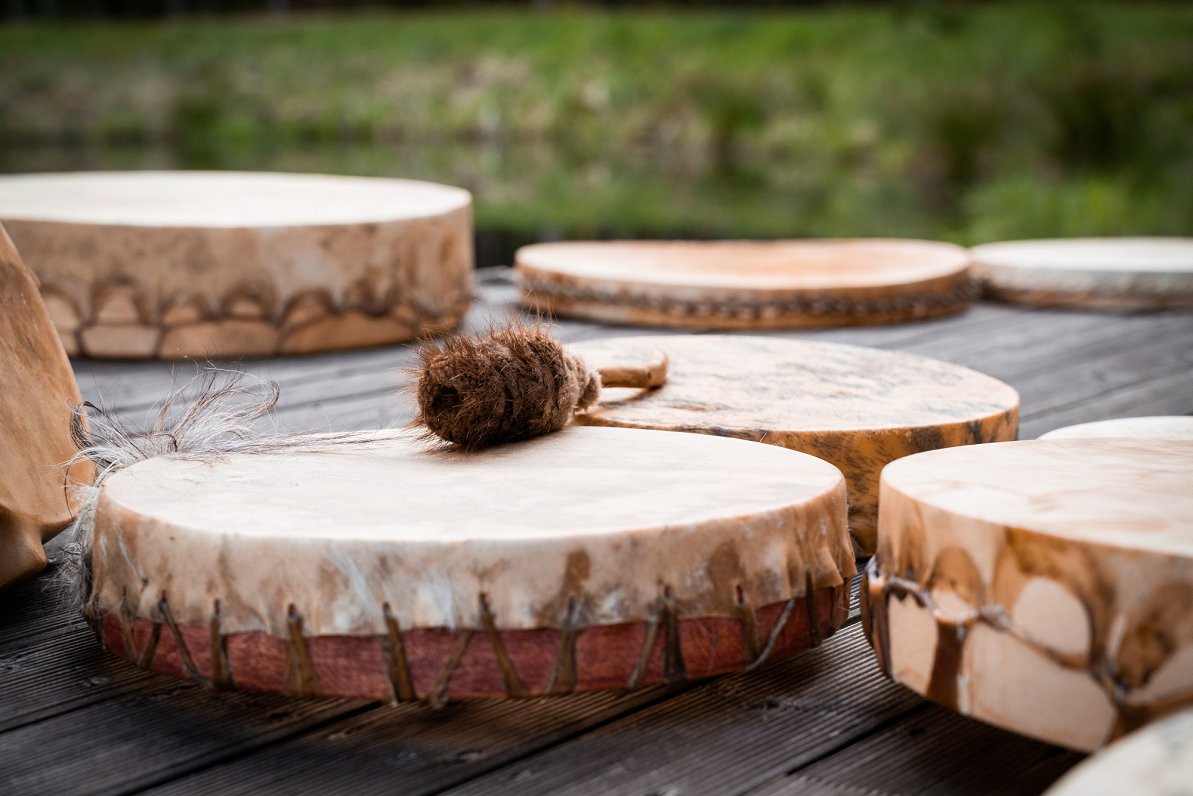Ilze and Sergejs Bušujevi from Amata, coming from the city, have found peace and harmony in the country environment of the Amata County.
They run drum-making masterclasses and help reveal the mystery of drums for everyone interested.
Ilze and Sergejs can be contacted by calling 29456485 or through Facebook.
The masters create drums from animal hide. The drums are used for playing music or simply feeling the vibration and sound. Creation process of a drum establishes a special link between the human and the drum, the instrument fills up with energy and love.
Drums release tension for hot-blooded hearts and provide energy for slow-paced minds.
Tools and materials
- A container for soaking the hide
- A round shape for the corpus
- A stable table
- Scissors
- Pencil
- Hammer and a tool for poking holes
- Pliers
- Twine
Making the drum
There are several ways to get hold of suitable hide. The easiest is to befriend a hunter. Preparation of the hide to make drums is a whole other story but an experienced hunter will tell you how the skin needs to be cured so that it can be properly cleaned from fur. If fur is not removed, the sound of drums will be more hollow.
- First, the body is made. You can hollow the middle of a stump or block of wood. The drum will be rather heavy but have an authentic look. Sergejs makes the body from birch strips by gluing them in several layers to a round shape.
- If you make the drums out of pre-prepared, dried leather, it must be soaked for at least a day to regain its flexibility.
- Select a suitable room and a table for work. Natural leather possesses a pungent scent.
- The piece of leather must be larger than the drum corpus.
- Lay the hide on the table and carefully smooth it from the center outwards to the edges.
- The body is placed in the center of the hide, drawing the outline around 4-5 cm from the body.
- Follow the outline with scissors, cutting a round piece which will form the membrane.
- The remaining hide is cut into strips, approximately 1.5 to 2 cm in width. Large drums require about 11 meters of strips.
- Carefully stretch the strips, do not yank them.
- For medium-sized drums, rim the hide with 16 wooden plates which will be the base for poking holes in the hide. The plates shall be placed at even distance from one another around the perimeter.
- Atop each plate and between the plates poke a round hole in the hide. You should end up with 32 holes in total.
- The body of the drums is placed in the middle of the round piece of hide.
- Pull twine through opposite holes and gently lift edges of the hide upward.
- Sergejs pulls a single twine through the holes first, forming a braid and tightly ties it up.
- The ropes are pulled from the opposite edges, creating a formation similar to cake boxes in a store.
- The drum must be rinsed and then dried for several days in moderate temperature.
- The drums are ready when the sound starts to emerge.



























